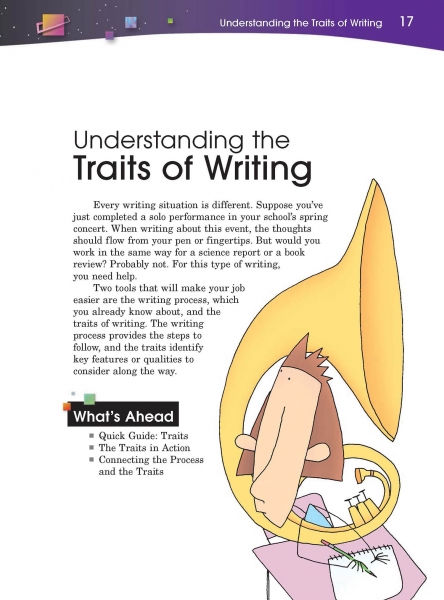Page 017 from

Start-Up Activity
The traits give you and your students a common language to use when discussing the key features of writing. The more that you can expose students to the traits, the quicker the traits will become part of their core understanding of writing.
Before you introduce the chapter, ask students to guess what traits produce quality writing. Or you could ask them what makes a piece of writing fun to read. Record their ideas on the board. Then read aloud the introduction. As you review the chapter, compare the traits of writing to the traits brainstormed by your class. How closely do they align?
Think About It
“Ideas are like doors. It might just be a door that gets you to another door. But it might lead you to a secret door that opens up to the green meadow outside the castle.”
—Tomie dePaola

Start-Up Activity
The traits give you and your students a common language to use when discussing the key features of writing. The more that you can expose students to the traits, the quicker the traits will become part of their core understanding of writing.
Before you introduce the chapter, ask students to guess what traits produce quality writing. Or you could ask them what makes a piece of writing fun to read. Record their ideas on the board. Then read aloud the introduction. As you review the chapter, compare the traits of writing to the traits brainstormed by your class. How closely do they align?
Think About It
“Ideas are like doors. It might just be a door that gets you to another door. But it might lead you to a secret door that opens up to the green meadow outside the castle.”
—Tomie dePaola


